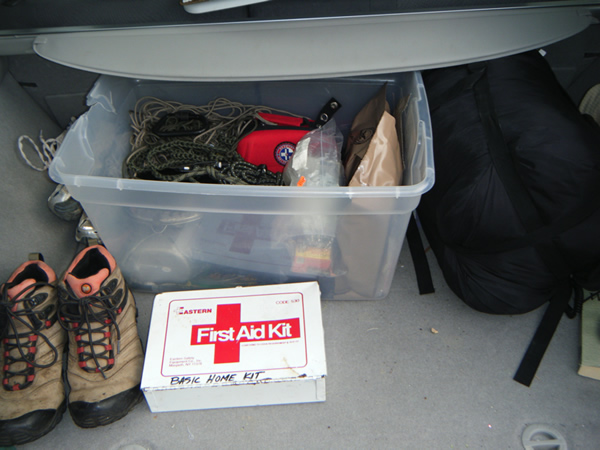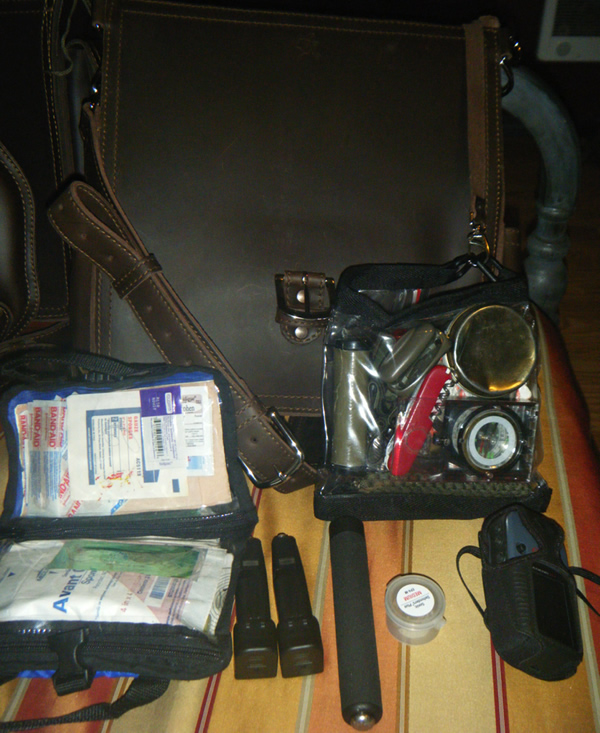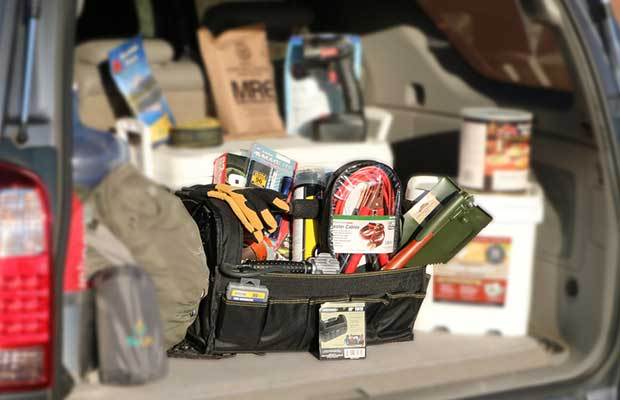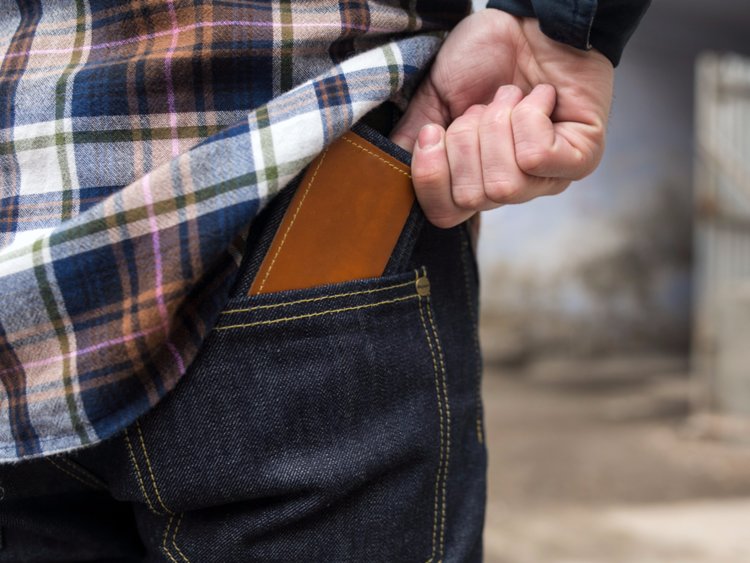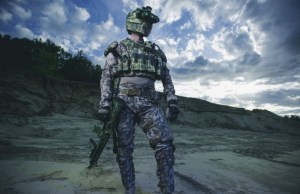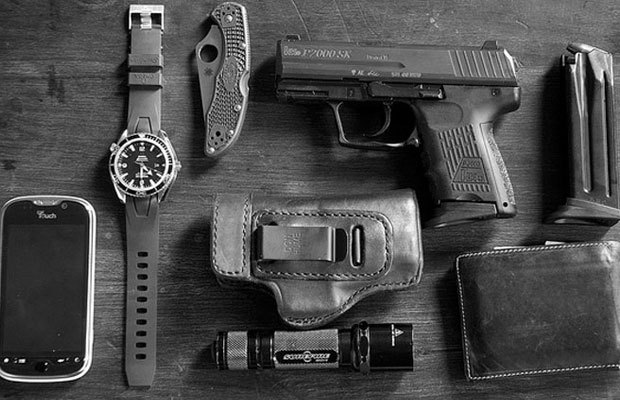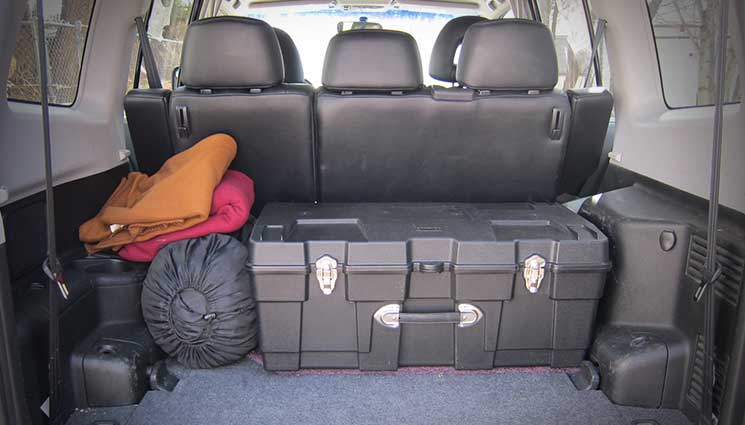
The average American spends up to 12 years in their car, and that means that you are probably going to be spending oh… around a sixth of your life in your automobile in various stages of transportation, idling, and using colorful language to describe your frustrations to your fellow drivers.
While I can’t help with making the daily grind pleasant, in this article we’re going to explore some things you can do to make sure that the events that happen in and around our cars are less stressful – and that’s a good thing, because less stress = longer lives = more time spent in cars.
With that in mind, let’s think back to Understanding Emergencies and Everyday Carry.
Emergencies
The vehicle has unique problems that are particularly challenging. That’s okay, though, because these challenges still fall into our previously established categories of emergency “types.” In doing this, we can maintain some consistency, while only modifying our metric of how protracted the event is. So, in evaluating how we’ll address our needs, we’ll first define our most likely emergencies by their types.
Type 1: High Intensity – Short Duration
There’s probably no better example of this kind of emergency than a car wreck. These happen in the blink of an eye and produce an overwhelming amount of pandemonium – and then they’re over. Car accidents take on a variety of levels of severity, but we can easily say that if you’re in a car accident, the accident doesn’t “last” for hours (even if the impacts do).
However, even though the quintessential Type 1 Emergency is the auto-accident, there are others:
– Carjacking
– Car fires
– Submergence
– Environmental emergencies (earthquakes, floods etc.)
All deserve to be considered when we pack our cars with gear and our heads with the skills to mitigate these emergencies. Keep in mind that these lists are going to be extremely short, as our everyday carry (EDC) structure will take care of quite a few of these problems.
Equipment
– Medical kit (discussed later)
– Water (potable)
– Flares
– Defensive tools
– Fire extinguisher (such an overlooked necessity)
Skills
– First Aid
– Defensive driving
– Good situational awareness
– Vehicle defensive skills
There are a few occurrences that will show you the ‘weak points’ in your defensive driving curriculum. Your ability to manipulate things like your seatbelt or clutch are likely to suffer, so it’s important to make sure you have a mental outline of what you’re going to do, and practice it.
For example, I don’t wear my seatbelt if I’m going under 20 miles per hour. If something happens, I want to be able to exit quickly and not fuss with it. While I don’t advocate this, it’s a part of my baseline from when I worked patrol. Establish one for yourself as well, based on your vehicle and your comfort level with the above situations. No matter what happens, there are a few basic things you’re going to want to do:
- Stop the vehicle from moving (if you can)
- Safely put the vehicle in neutral, and utilize the parking break. Note: This allows you to keep the vehicle running, in case you need to move again quickly, and minimizes the chances that the vehicle won’t start again if you’ve been in a collision.
- Safely exit the vehicle
- Move to a safer location (off the road, etc.)
So, for me, my order of operations is as follows:
- Move out of the area of whatever put you in danger (i.e., get the heck out of Dodge)
- Put the vehicle in Neutral and engage the parking brake
- a) Release your seatbelt slowly, cautiously, and without an excess of movement (this is a relatively small activity that can turn into a fine-motor-skill nightmare if you don’t practice it – especially if you’re hanging upside down, or some road-raged freak is trying to punch you through the window – both of which have happened to me)
b) Remove your seatbelt deliberately and without any ‘sudden’ movements. This generally will cause the belt to “lock” and resist your movements. Don’t get trapped by being in a hurry! - Do a mental sweep of the vehicle and the surroundings. Grab any equipment that you must have.
- Exit the vehicle after a second quick spot-check in the mirrors.
- Move away from any hazards, and place yourself behind something solid (jersey barriers, telephone poles, etc.)
This way, regardless of the emergency, I can get in and out quickly, am aware of the potential hazards before I get out, and I have anything I’m going to need to treat injuries or move on foot (second-line equipment) – which opens us up to address our second type of problem:
Type 2: Moderate Intensity – Moderate Duration
Before we start, it’s important to keep in mind that “intensity” is relative. There’s really not much about a flat tire that’s intense, and it’s usually resolved in a matter of hours. This seems really “ho-hum” because it’s common in our lives. You get used to being shot at or bombed, too, if it happens enough. So when we look at these problems, the key point is that these situations expose us and increase our likelihood of finding ourselves in a situational Type 1 Emergency (such as being struck by another motorist while changing a tire. Ouch.)
So, what are our Type 2 Vehicle Emergencies?
Things like:
Flat tires, overheating engines/coolant issues, fender-benders, dead battery, empty fuel tanks, and the like. These are mundane and inconvenient, and that combination makes them uninteresting. It’s also where the majority of our planning and equipment takes place. In everyday life, the Type 2 Emergency challenges our resourcefulness and our ability to adapt and provide for ourselves. In and around our vehicles, it simply asks of us, “What have you done to prevent or mitigate this?”
So, what should we carry for these emergencies?
- Water
- Coolant
- Motor oil (2 qts)
- Jumper cables
- Food (I throw a couple MRE’s in the back)
- Emergency blanket (Mylar, poncho liner, sleeping bag – whatever you like)
- Flashlight (headlamp type – it’s ridiculously inconvenient to try to hold a light and work)
- Spark plug (appropriate to your vehicle)
- Vehicle tool Set
– Screwdriver
– Ratchet set with appropriate attachments for your plugs
– Crescent wrench
– Multimeter - Fuses
- Tire iron and jack
- Gas can
This is going to depend on your level of skill and comfort with working around common automotive problems, but being able to take care of some of these ‘easy fix’ issues will go a long way in getting you out of the Type 2 hold-up and on your way to bigger and better things.
Skills:
Be able to change your tire, test your battery, and if necessary, knock corrosion off it. Be ready to tighten wires. Know how to check your spark plugs and change them if necessary. Be able to check your oil, and know how to check your engine for blown seals. Your goal with this type of emergency is “Get myself home” – if you are stuck, you’re not going to dry out, starve, or freeze.
By the nature of the “Understanding Emergencies” structure, there is no framework for a “vehicle-specific” Type 3 Emergency. At that point, it’s simply a Type 3 Emergency. But, there are things you can do to prepare during the intermittent 12-year stretch of life that you’re going to be spending on the road, just in case you’re away from home and something significant happens.
Type 3: Low Intensity – Long Duration
The third line equipment is generally your backpack and contains the type of equipment you’ll probably not use unless you’re displaced; a benefit of this line of equipment is that it’s easy to pack and keep in your car, and it’s portable in case you have to move away from your vehicle.
However, keeping a kit in your car also allows you to quickly move in case of an emergency such as a flood, fire, riots, or earthquakes – all of which could potentially be Type 3 Emergencies. However, there’s always the risk of car prowlers and theft. For this reason, I isolate my vehicle third-line kit into two categories:
- My backpack
- A bin
The backpack contains equipment to cook, collect, and purify water, build shelter, and stay warm. These are core proficiencies that will keep you alive; the notion is that with these supplies, I can scavenge for food and collect what I need from the environment. With that in mind, the bin is a mobile supply point. This is where I keep two categories of supplies:
- Consumables (water, food, and fuel)
- Environmental supplies (such as clothing, blankets, etc.)
Between these two additional resources, you can use your vehicle third-line kit to tailor your mobile third-line to your specific needs, if you find yourself in an emergency.
Vehicle Third-Line Contents:
- Food – (MRE x3)
- Water – 1 gallon; 1 quart canteen w/cup
- Cyalume chem lights x2
- Medical kit
- 25 yards of paracord
- Long underwear (2x shirt, 2x pants)
- Socks x3 pairs
- Sleeping bag
- Poncho liner
Part II: Everyday Carry and Your Vehicle
The first consideration for EDC and your vehicle is a proverbial double-edged sword. Our vehicles can carry more than we can, but we can maneuver in places our vehicles cannot. For this reason, when I think about my vehicle equipment, I break it into a couple categories:
- Vehicle-specific equipment: This is the stuff that is carried to keep the vehicle moving for as long as possible over as much terrain as possible. This includes your spare parts, tools, some coolant, water, and the like.
- Augmented equipment: The equipment we can use immediately that will be no great loss if we have to leave it behind.
The vehicle is a solid place to keep your third-line equipment. This is the “get home” equipment that you could live off for several days without any scavenging or energy-intensive labor. Of all your equipment, the third-line setup is the easiest to exaggerat, and make unappealing to carry. It’s also the most dependent on your level of skill and savvy with packing energy-dense foods, lightweight equipment, and water.
For this reason, please (x3) get some training. I don’t care if it’s from a Boy Scout – learn how to start a fire, collect and purify your water, and build a decent shelter. If you can do that, everything you carry will just help to assist.
Also, adjust according to your location. If you’re in Alaska, you should probably not try to survive with just a Mylar bag and extra set of socks.
Part III: Sustenance
Keeping yourself fed, especially by the time you realize there’s an emergency, is going to start becoming more and more tricky as the demand for food articles increases. In the wake of Hurricane Katrina, for example, looting cleared the shelves of anything potable and palatable in short order. If you didn’t steal, you were left with what you stocked on your own.
While it’s nice to have some things stuffed in the pantry, having some in your car is a good bet as well. There are a lot of different lines of logic on this, but my thought here is that you need food articles that conform to some very specific standards:
- Calorie dense
- Lightweight
- Long shelf life
For this reason, I like canned tuna, Clif bars, Military MRE’s/Mountain House meals, and trail mixes. Water is a bit trickier, as not all plastics are food-grade, and in thermal extremes, you begin to get leaching where the container actually starts depositing chemicals into your Dihydrogen Monoxide.
This applies to both aluminum and plastic containers, and this is speculative on my part, but I don’t trust BPA-free containers either. For this reason, I restock my water out of my home each day, and carry my water containers to and from.
In addition to this practice, I keep a Katadyne filter in my vehicle kit. This way, if there is an emergency, I can ditch the contents of my typical carry bag (books, etc.) and grab the necessities. With that said, I still keep all the 1st, 2nd and 3rd necessity items in my bags at all times – so I have a bare minimum of equipment even if I’m walking around campus, grabbing lunch, or hiking.
Layering your equipment in this way will supply you with a fast, reproducible, and modular way to organize and use your kit.
Conclusion
It is highly recommended that after reading this article you evaluate your current vehicle preparedness supplies and everyday carry items based on your skills and possible needs. And regularly check on the condition and quality of your preps stored in your car, as they are subjected to considerably harsher conditions in Summer and Winter while enclosed in your vehicle compared to sitting on a shelf in your garage or home.
Learn new skills that will help you evaluate and mitigate situations and emergencies related to vehicles and prep the items needed to match your skills and possible emergencies. All the gear in the world stuffed in a trunk will not help you if you don’t know how to use it.


